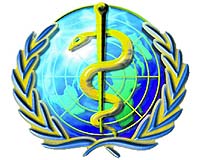In five randomised trials of participants with heavy short-term physical stress, vitamin C halved the incidence of the common cold.
Three of the trials studied marathon runners, one studied Swiss school children in a skiing camp and one studied Canadian soldiers during a winter exercise.
Furthermore, in a recent randomised trial carried out with adolescent competitive swimmers, vitamin C halved the duration of colds in males, although the vitamin had no effect on females.
Regular doses of vitamin C of one gram per day or higher have reduced the average duration of colds in adults by 8% and in children by 18%.
Although these findings unambiguously show that vitamin C has a biological effect on colds, taking vitamin C every day to shorten infrequent colds does not seem reasonable.
On average, adults have only a few common cold episodes per year and children have some half a dozen colds per year.
Few therapeutic trials, meaning trials in which vitamin C was given only after the first symptoms of a cold appeared, have been carried out and their results are not consistent.
Nevertheless, given the consistent effect of vitamin C on the duration and severity of colds in the regular supplementation studies, and the safety and low cost of vitamin C, the authors consider that it may be worthwhile for individual common cold patients to test whether therapeutic vitamin C is beneficial for them.
The above story is reprinted from materials provided by Helsingin yliopisto (University of Helsinki), via AlphaGalileo.
Harri Hemilä1, Elizabeth Chalker, Cochrane Acute Respiratory Infections Group. Vitamin C for preventing and treating the common cold. Cochrane Review, 31 JAN 2013 DOI: 10.1002/14651858.CD000980.pub4



















